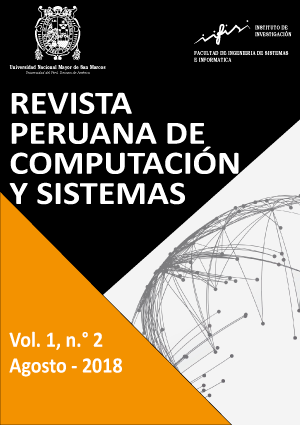Model for the preparation of a short list of candidate techniques for the prioritization of requirements
DOI:
https://doi.org/10.15381/rpcs.v1i2.15380Keywords:
Requisitos, priorización de requisitos, técnica de priorización, software colaborativo, CMSAbstract
Prioritization of requirements is an important stage in the software development process. Technical stocks of prioritization of the requirements that must obtain the priorities that correspond to each participant and obtain a unified and prioritized list. Different techniques are sought in different projects. A preliminary step is to develop a list of candidate techniques from which a more appropriate technique is selected. In the bibliography consulted, the authors define a previous list, without specifying the criterion that was used for their pre-selection. A model for the preparation of a short list of techniques for the prioritization of requirements is proposed. Previously a review of the definition of requirement, stakeholder, requirements engineering, requirements management and its prioritization phase, as well as other related concepts. A model is proposed so that the elements comply with the candidate techniques, the implementation of the system in collaborative CMS tools. At the end, the evaluation process is included, which will validate the proposed model.Downloads
Published
Issue
Section
License
Copyright (c) 2018 E. Daniel Bravo Loayza

This work is licensed under a Creative Commons Attribution-NonCommercial-ShareAlike 4.0 International License.
THE AUTHORS RETAIN THEIR RIGHTS:
(a) The authors retain their trademark and patent rights, and also over any process or procedure described in the article.
(b) The authors retain the right to share, copy, distribute, execute and publicly communicate the article published in the Revista Peruana de Computación y Sistemas (for example, place it in an institutional repository or publish it in a book), with acknowledgment of its initial publication in Revista Peruana de Computación y Sistemas.
(c) Authors retain the right to make a subsequent publication of their work, to use the article or any part of it (for example: a compilation of their work, lecture notes, thesis, or for a book), provided that they indicate the source. of publication (authors of the work, magazine, volume, number and date).



